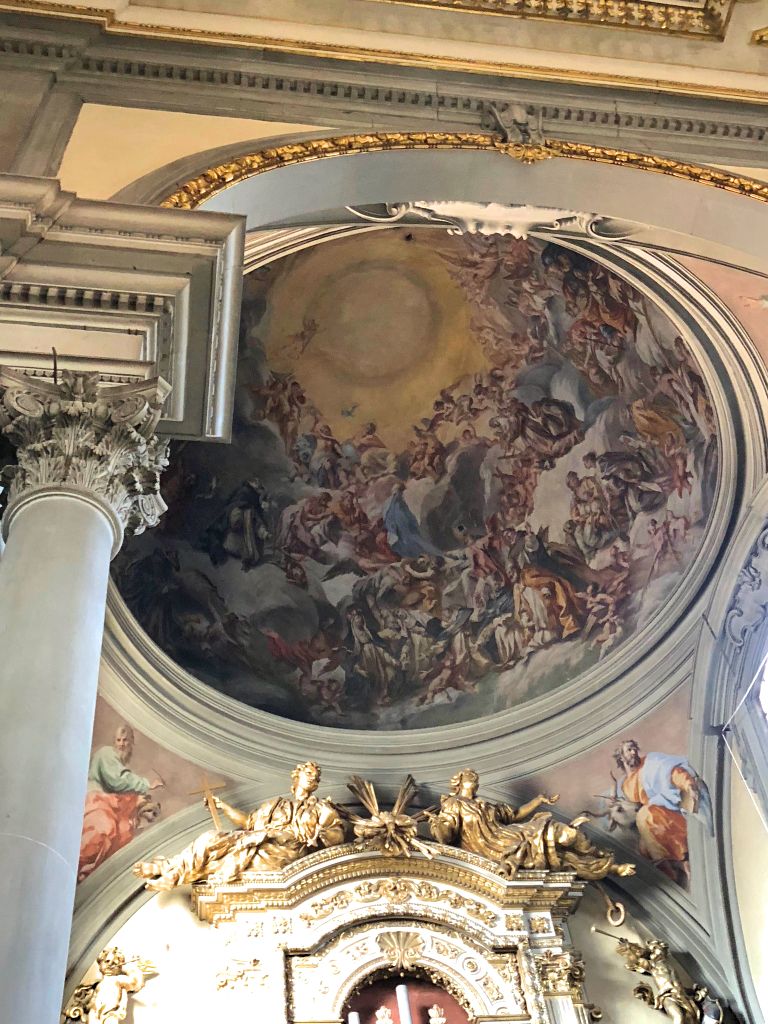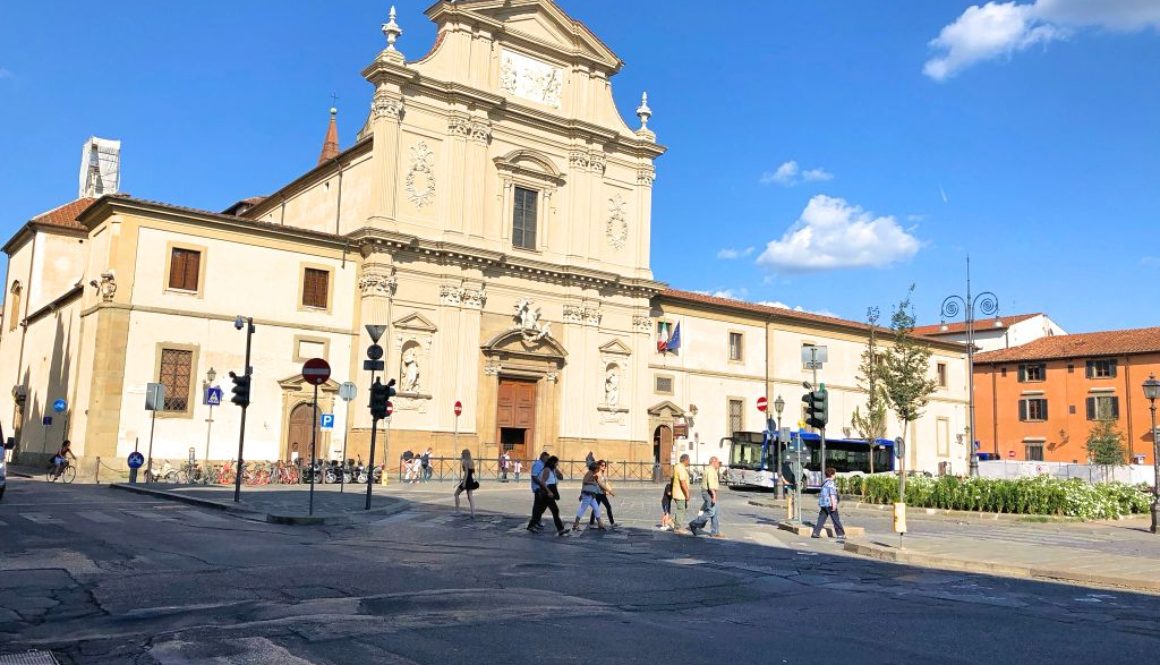Savonarola and San Marco, Florence
Many years ago, I read a novel by George Eliot about a young girl called Romola living in Renaissance Florence. The story was about her life amid the religious upheavals of the 1490s. Much of the novel referred to the powerful Savonarola, the monk who coerced the Florentine people to abandon their material wealth for religious piety. It was a turbulent time. I have always been intrigued by this period of Florentine history. Visiting Florence, I was able to bring this all to life. I saw where he lived and where he met his fate.
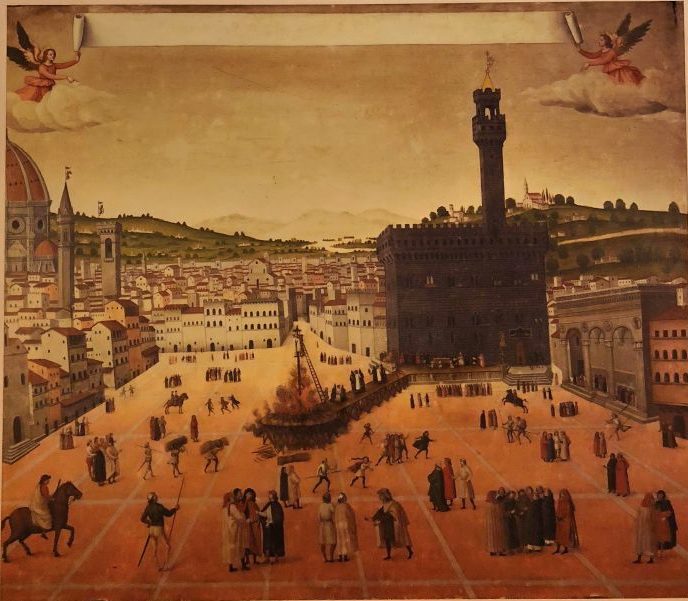
Curious about Savonarola
A plaque in Piazza della Signoria commemorates Fra Girolamo Savonarola who was burnt on a bonfire in 1498.
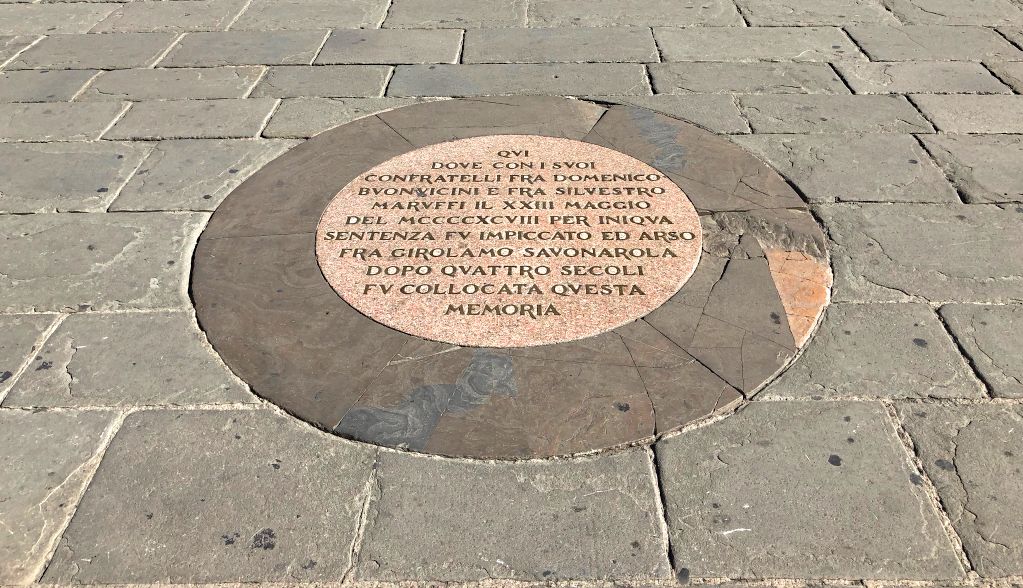
It is the exact spot where he had encouraged Florentine citizens to burn all their books and items of wealth on an enormous bonfire just a few years earlier. The burning event became known as The Bonfire of the Vanities.
Savonarola Fervour
Savonarola’s influence over Florence during the 1490s was feverish. His sermons were a pushback against the Medici’s and corrupt clergy members. Savonarola viewed them as obscenely wealthy. He saw them as enemies of the church, although he was careful not to name them.
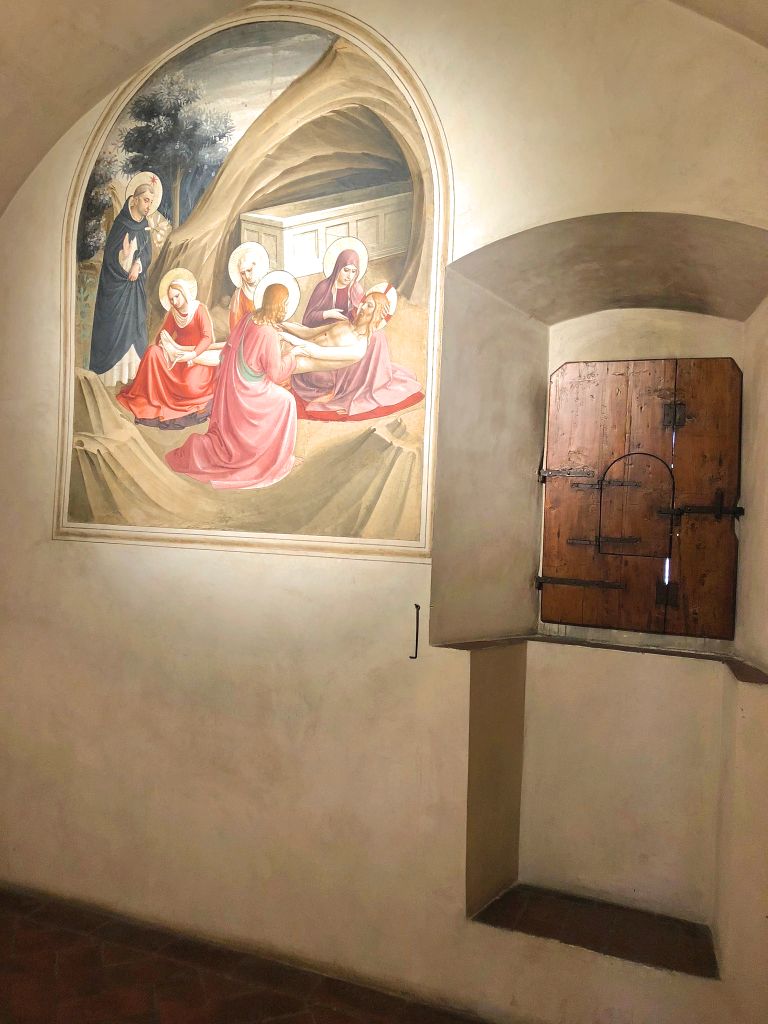
He claimed that their power and immense wealth had been disastrous for Florence. Savonarola regularly preached to crowds on such themes. At the same time, he was preaching the French had invaded Florence. He used the invasion to suggest God was angry with the Florentines. It worked for a while.
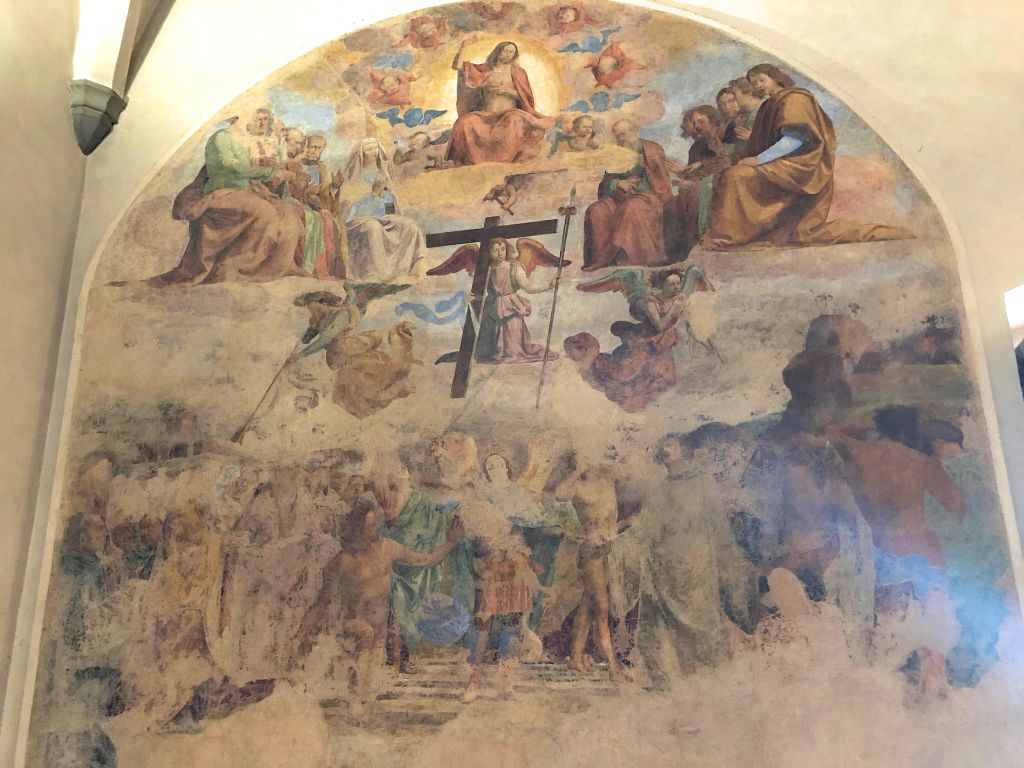
Savaronola’s Downfall
Eventually, Papal authorities concluded that Savonarola’s sermons were an overreach of his duties. The pope excommunicated him in 1497. The charges were for treason and heresy. Subsequently, to avoid arrest, he stopped preaching in public.
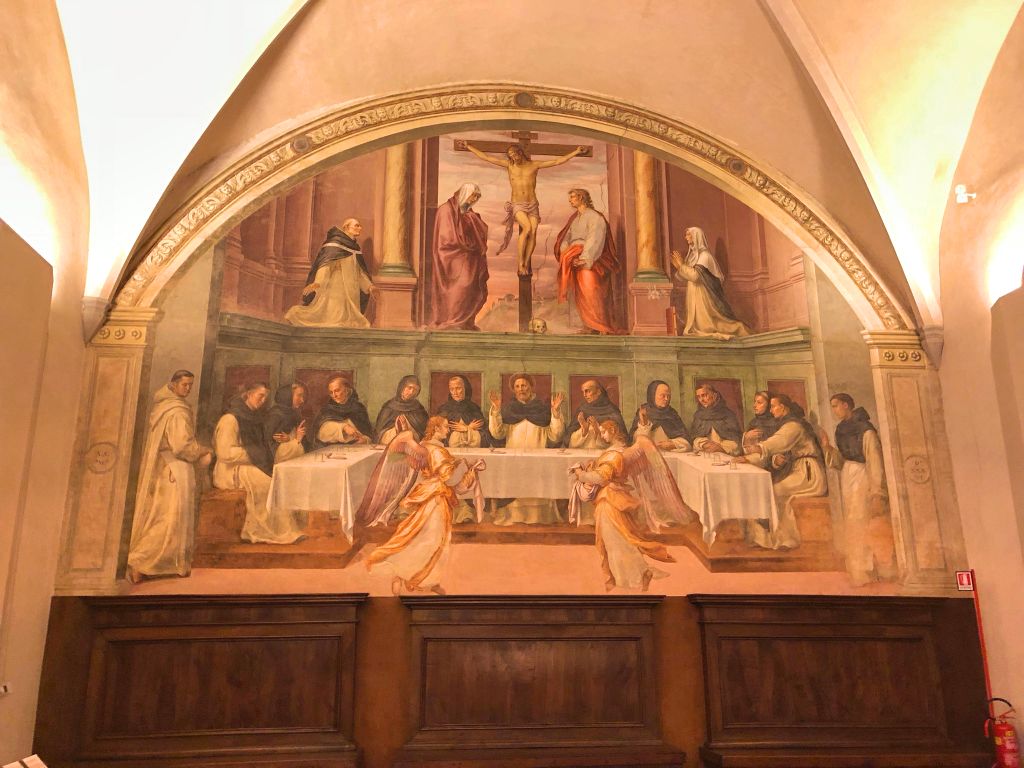
When he did return to public life, a colleague of his in the monastery boasted that he could walk through fire. Predictably, he challenged Savonarola, who, of course, accepted. In the end, rain washed out the event, and officials cancelled it, and the crowd turned on him.
Savonarola’s Execution
Along with two friars from San Marco, he was arrested. Savonarola confessed under torture to having invented his prophecies and visions.
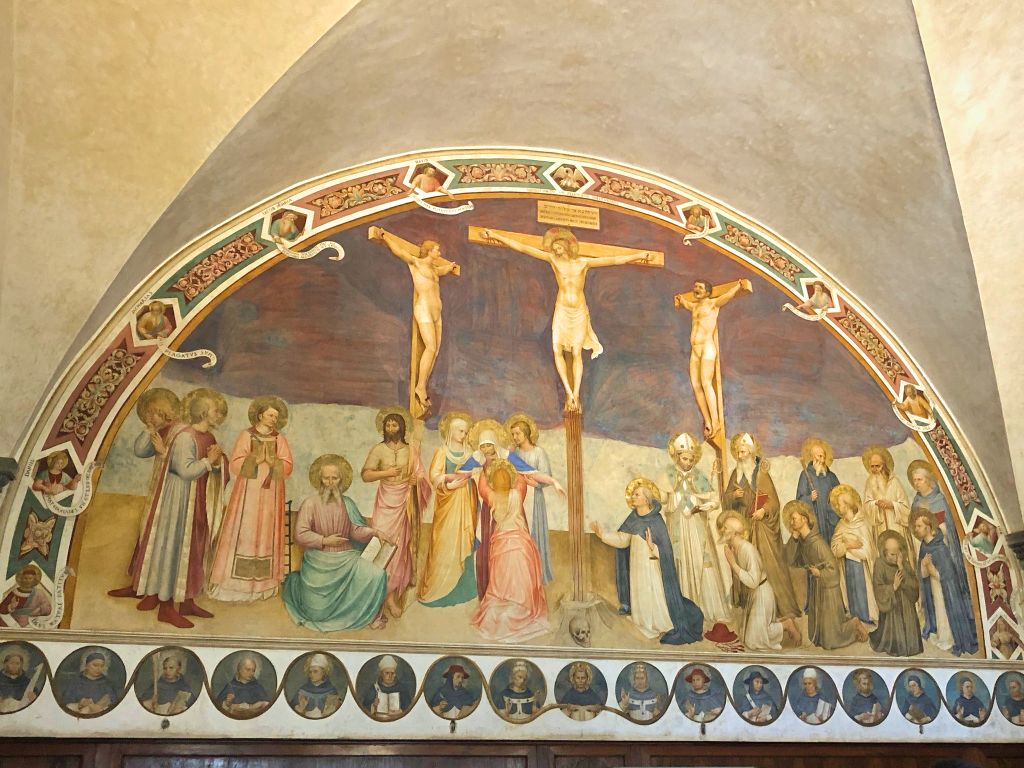
The three were named heretics and schismatics and were condemned to death. On the 23rd May 1498 in Piazza della Signoria, they were hanged with fires ignited beneath them to consume their bodies.
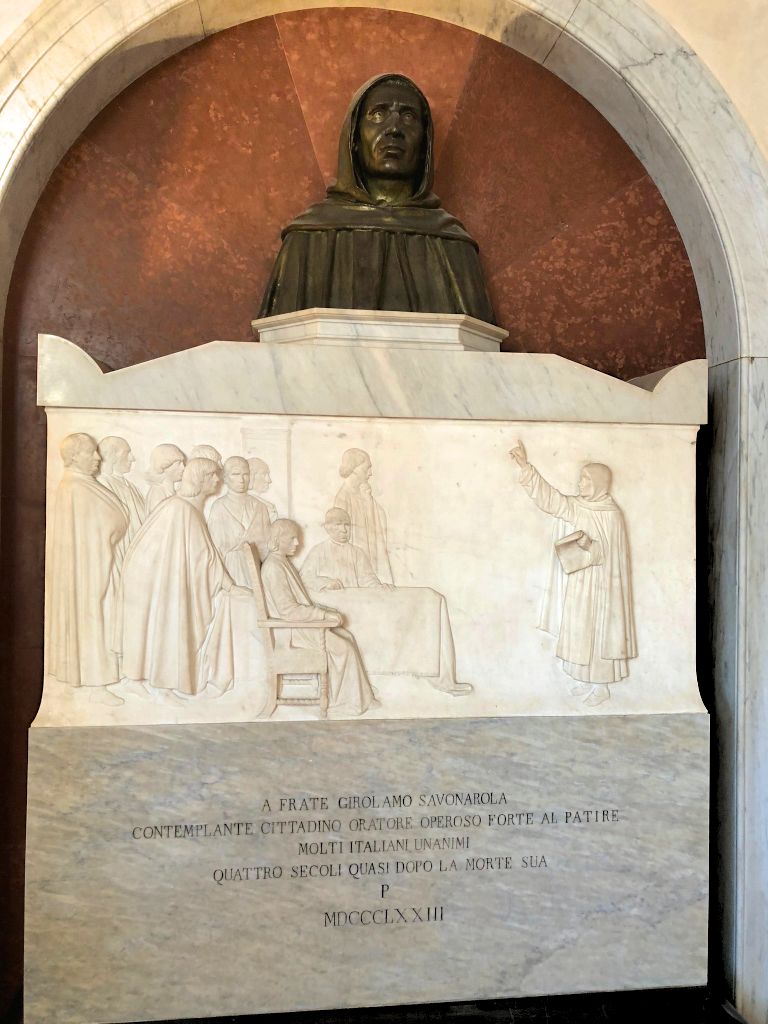
San Marco
The monastery is adjacent to the Basilica of San Marco in the piazza of the same name. It was founded in the 13th by the Silvestrine monks.
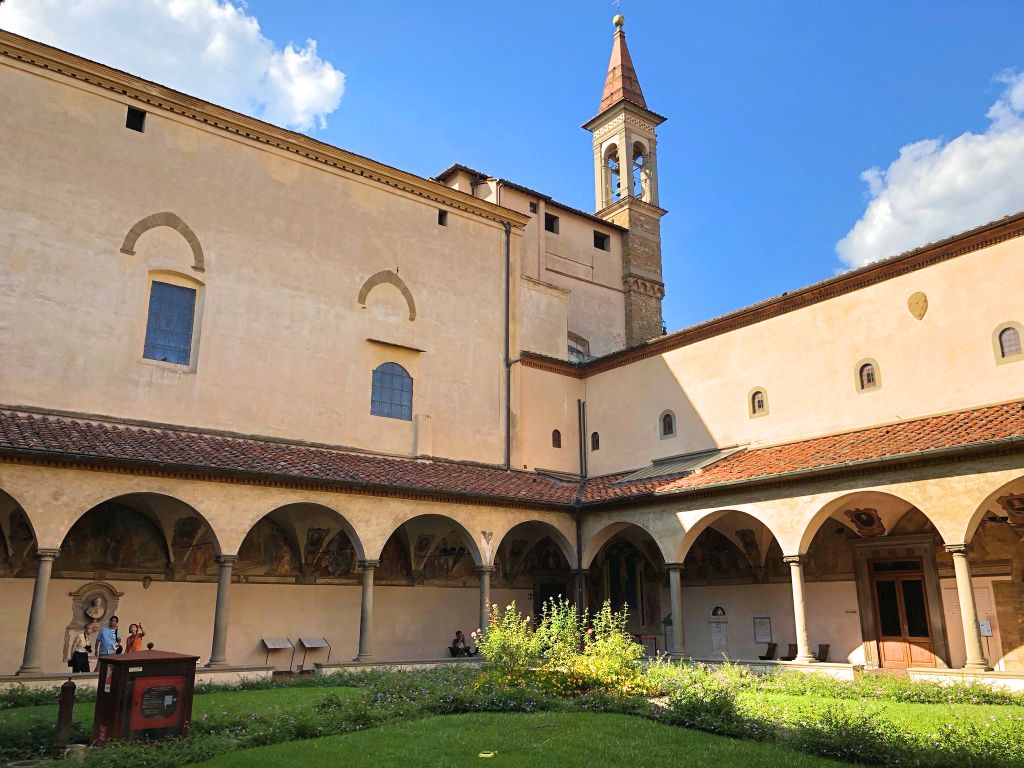
The order, though, was not popular with the city. The monks favoured wealth over religious piety and charity. After decades of feeling neglected, the Florentines complained to the pope. Consequently, the Silvestrines were ordered to vacate the monastery. Cosimo Medici, keen to court favour with the papacy, intervened and invited the Dominican monks from Fiesole to move into San Marco.
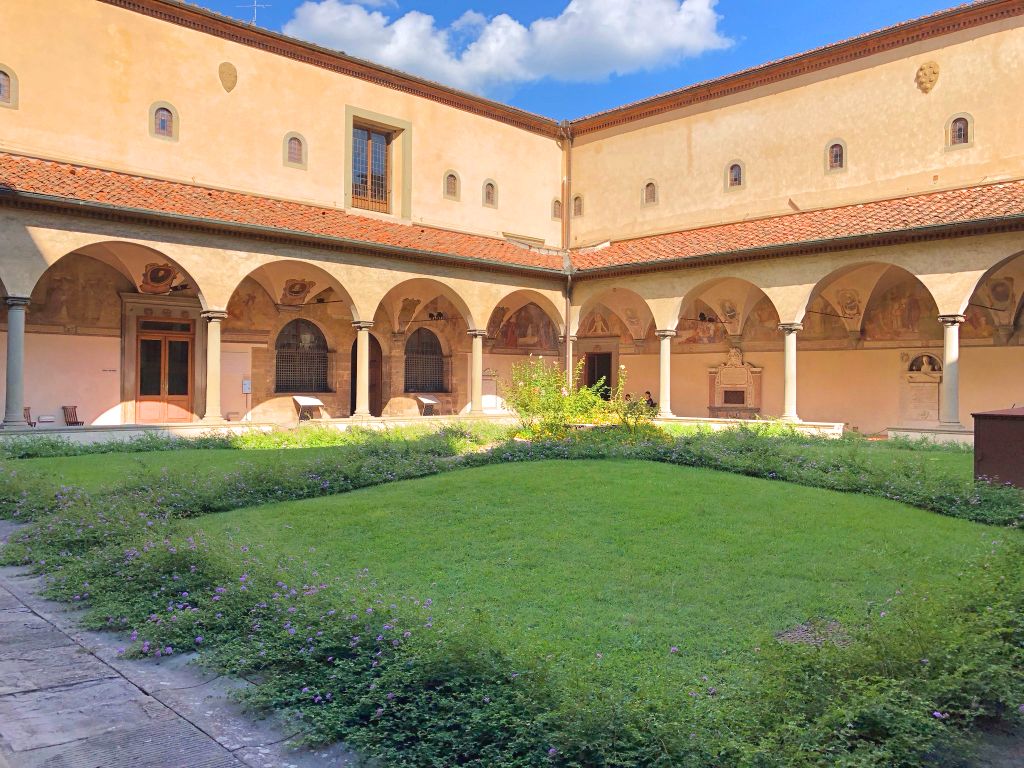
The Dominicans began an extensive remodelling of the basilica and monastery. It was at this point that Savonarola arrived in Florence. He moved into the monastery, as Prior, from his hometown of Ferrara to San Marco in 1489.
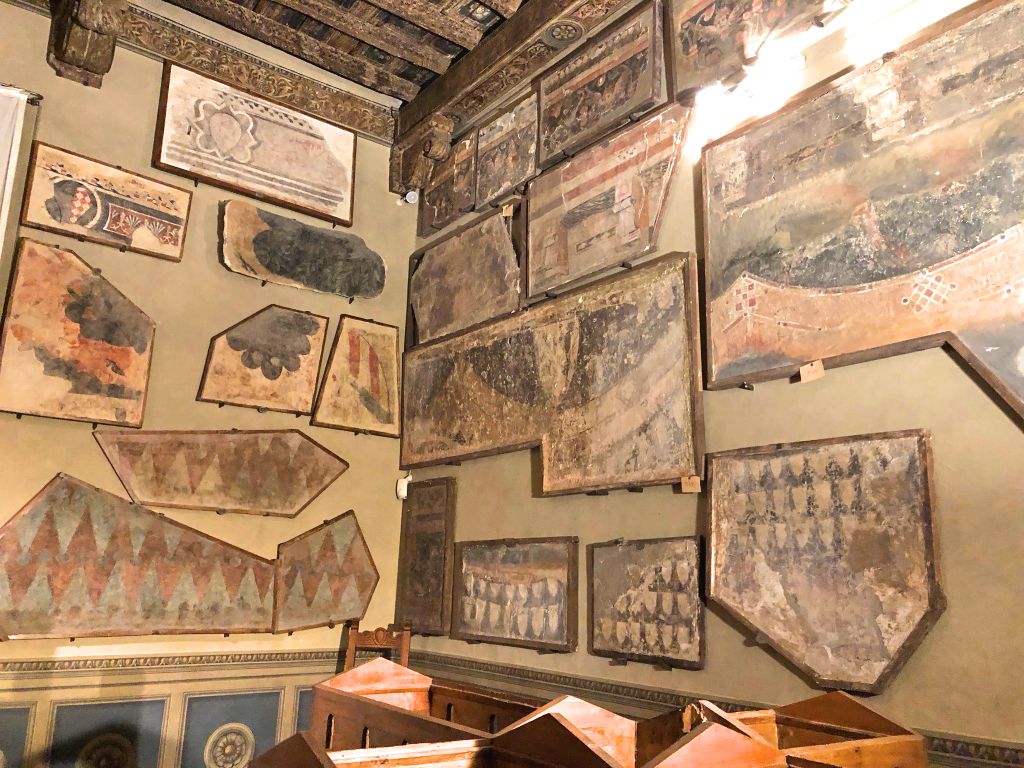
Visiting San Marco
The monastery is open to the public, and it is possible to see the monks’ cells, and of course, Savonarola’s.
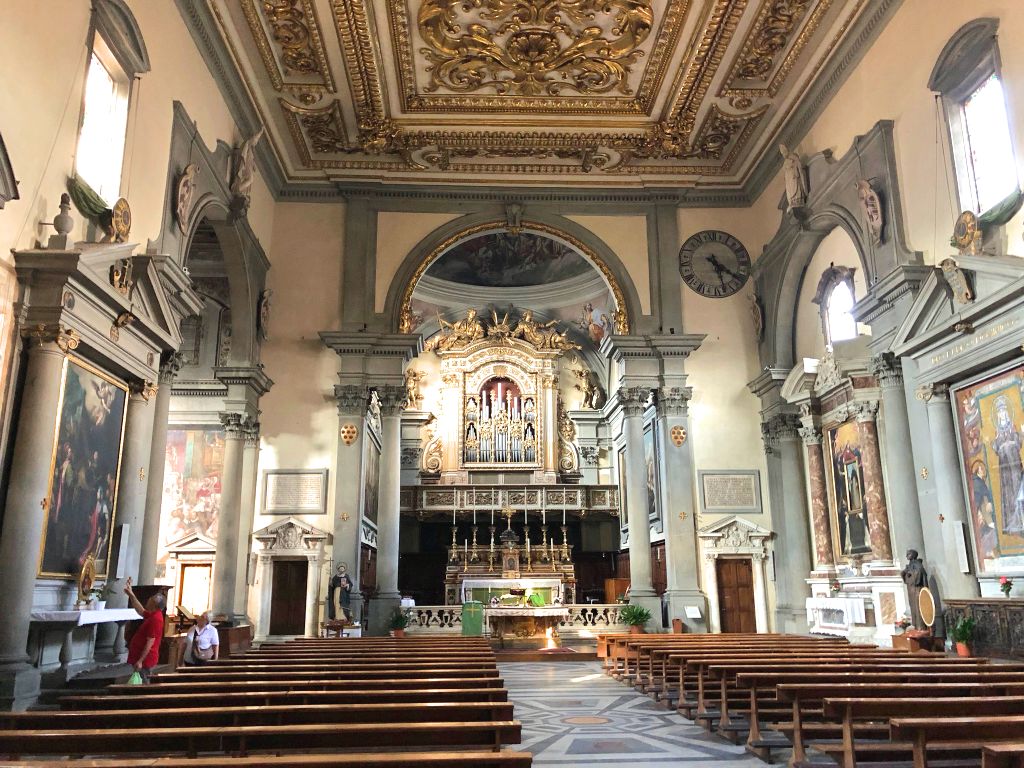
It is by ticket entry to visit the monastery, and it is separate from the basilica.
